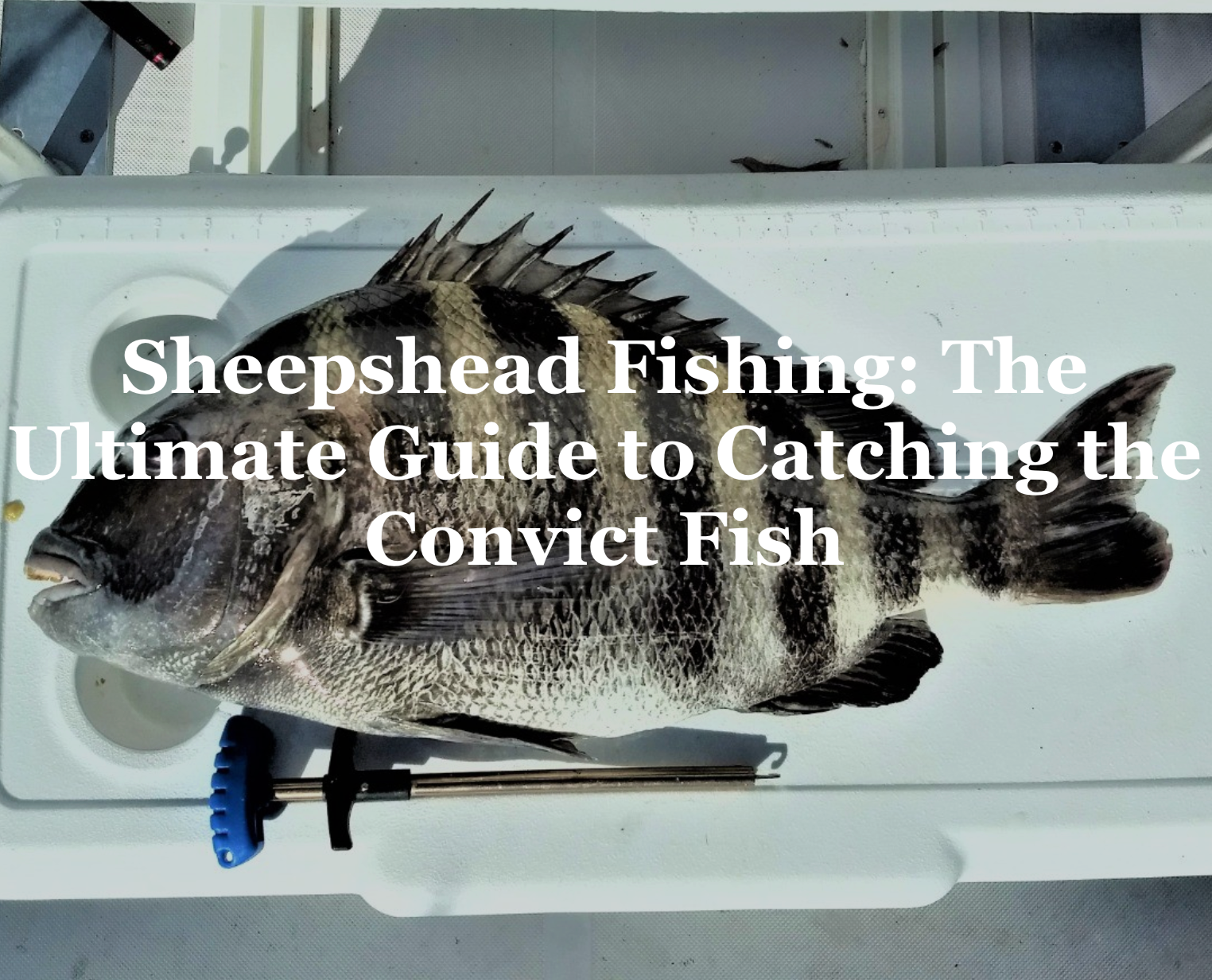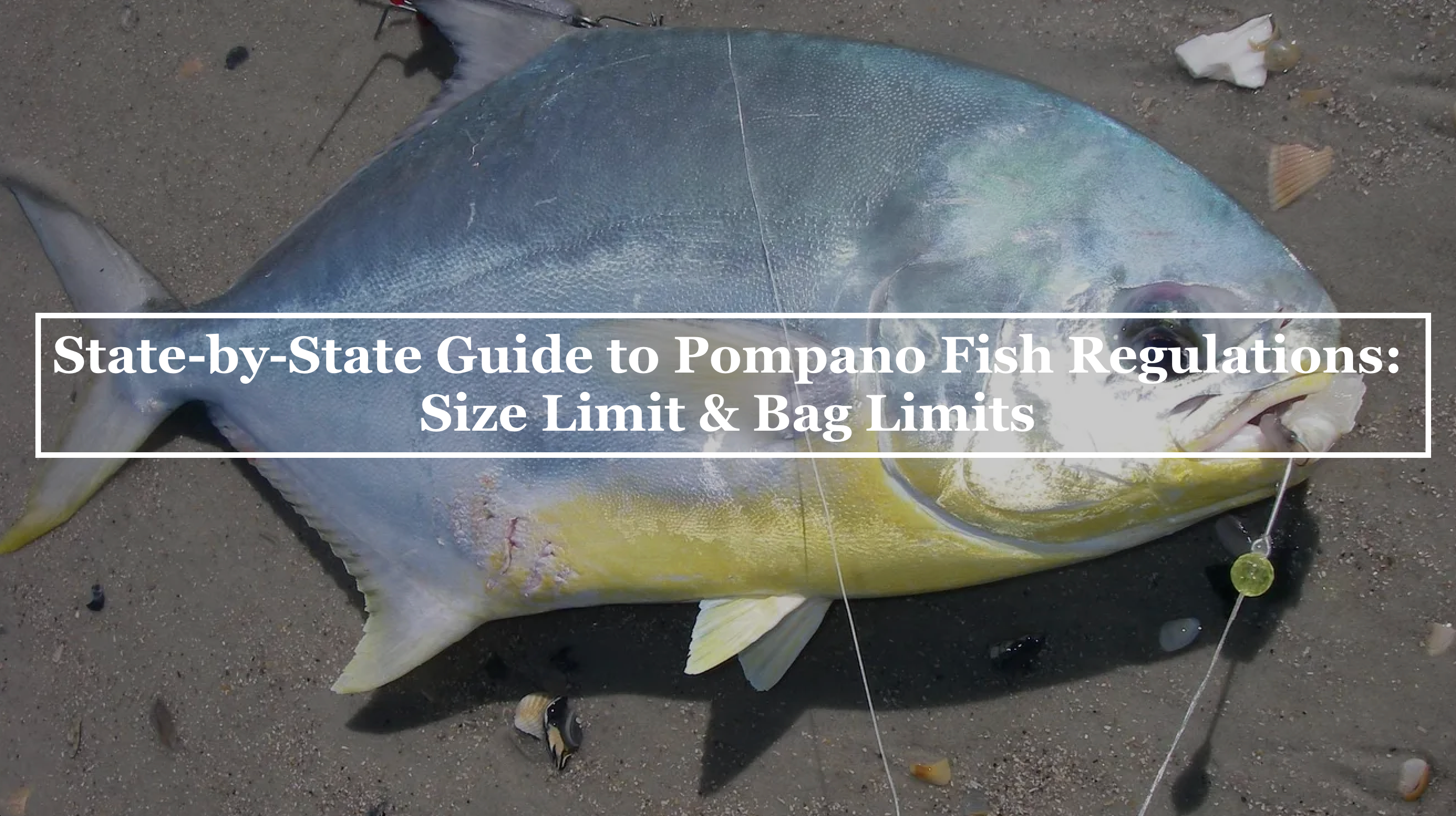Sheepshead fishing is a thrilling pursuit for saltwater anglers, offering a tasty reward and a challenging fight. Known as the "convict fish" for their black stripes, sheepshead thrive along coastlines, piers, and reefs from Texas to the Carolinas. But before you cast your line, understanding sheepshead fishing regulations—including size limits and bag limits—is crucial to stay legal and protect this prized species. Regulations vary by state, so we’ve compiled a comprehensive, state-by-state breakdown of sheepshead size limits and bag limits for 2025. Whether you’re a seasoned pro or a beginner, this guide ensures you fish responsibly and avoid hefty fines. Let’s dive in!
Why Sheepshead Fishing Regulations Matter

Sheepshead (Archosargus probatocephalus) are a staple of inshore fishing, but overharvesting can threaten their populations. State-specific rules—like minimum size limits and daily bag limits—help sustain healthy stocks for future generations. Ignoring these laws risks fines, confiscated gear, or worse. Plus, knowing the regs lets you plan your trip and maximize your catch legally. Ready to explore the rules? Here’s your state-by-state guide to sheepshead fishing regulations in 2025.
Sheepshead Fishing Regulations by State

Texas Sheepshead Regulations
- Size Limit: 15 inches minimum (total length, TL)
- Bag Limit: 5 fish per person per day
- Possession Limit: 10 fish (double the daily bag)
- Details: Texas boasts some of the best sheepshead fishing in the Gulf, especially around jetties and artificial reefs. A saltwater fishing license with endorsement is required. No seasonal closures apply, but only one fish over 25 inches counts toward the bag limit in the Lower Laguna Madre.
- Official Link: Texas Parks & Wildlife Department - Saltwater Bag and Length Limits
Louisiana Sheepshead Regulations
- Size Limit: No minimum size limit
- Bag Limit: No daily bag limit
- Possession Limit: No possession limit
- Details: Louisiana’s lax rules make it a sheepshead paradise—perfect for anglers targeting piers and oil rigs. A saltwater fishing license is required, and there are no federal overrides in state waters. Enjoy unlimited catches, but fish responsibly!
- Official Link: Louisiana Department of Wildlife and Fisheries - Recreational Fishing Regulations
Mississippi Sheepshead Regulations
- Size Limit: 14 inches minimum (TL)
- Bag Limit: 15 fish per person per day
- Possession Limit: 15 fish (same as daily bag)
- Details: Mississippi’s generous bag limit caters to anglers along the Gulf Coast. A recreational saltwater license is required, and the 14-inch minimum ensures juvenile fish grow to maturity. No seasonal restrictions apply.
- Official Link: Mississippi Department of Marine Resources - Recreational Size and Possession Limits
Alabama Sheepshead Regulations
- Size Limit: 12 inches minimum (TL)
- Bag Limit: 10 fish per person per day
- Possession Limit: 10 fish (same as daily bag)
- Details: Alabama’s coastal waters teem with sheepshead, especially near Mobile Bay. A saltwater fishing license is mandatory, and fish must be kept whole (head and fins intact) until landed. No seasonal closures, but check federal waters for stricter rules.
- Official Link: Alabama Department of Conservation and Natural Resources - Saltwater Fishing Limits
Florida Sheepshead Regulations
- Size Limit: 12 inches minimum (TL)
- Bag Limit: 8 fish per person per day
- Possession Limit: 8 fish (same as daily bag); 50 per vessel with 2+ anglers
- Details: Florida tightened its sheepshead rules in 2018 to protect stocks, making it a hotspot from Tampa Bay to the Keys. A saltwater fishing license is required, and special rules apply in Biscayne National Park. No harvest from federal waters exceeds state limits on the same trip.
- Official Link: Florida Fish and Wildlife Conservation Commission - Sheepshead Regulations
Georgia Sheepshead Regulations
- Size Limit: 10 inches minimum (TL)
- Bag Limit: 15 fish per person per day
- Possession Limit: 15 fish (same as daily bag)
- Details: Georgia’s lenient size limit and high bag limit make it a sheepshead haven along the Atlantic coast. A saltwater fishing license and free Saltwater Information Permit (SIP) are required. No seasonal closures, but fish responsibly to preserve stocks.
- Official Link: Georgia Department of Natural Resources - Saltwater Fishing Regulations
South Carolina Sheepshead Regulations
- Size Limit: 14 inches minimum (TL)
- Bag Limit: 10 fish per person per day; 30 per boat (max)
- Possession Limit: 10 fish (same as daily bag)
- Details: South Carolina’s sheepshead thrive around Charleston’s docks and reefs. A saltwater fishing license is required, and the boat limit caps group catches. No seasonal restrictions, but federal waters may differ.
- Official Link: South Carolina Department of Natural Resources - Saltwater Recreational Fishing Regs
North Carolina Sheepshead Regulations
- Size Limit: No minimum size limit
- Bag Limit: No daily bag limit
- Possession Limit: No possession limit
- Details: North Carolina offers unrestricted sheepshead fishing, ideal for Outer Banks anglers. A Coastal Recreational Fishing License is required. Smaller fish (1-3 lbs) dominate here, unlike Virginia’s trophy-sized catches.
- Official Link: North Carolina Division of Marine Fisheries - Recreational Fishing Rules
Virginia Sheepshead Regulations
- Size Limit: No minimum size limit
- Bag Limit: 4 fish per person per day
- Possession Limit: 4 fish per boat multiplied by eligible anglers
- Details: Virginia opts for a trophy fishery with a strict 4-fish limit, set in 2007 to protect larger sheepshead (avg. 8-15 lbs). A saltwater fishing license is required, and Virginia Beach is a hotspot. No size limit allows flexibility, but the low bag keeps stocks healthy.
- Official Link: Virginia Marine Resources Commission - Sheepshead Regulation 4 VAC 20-1110
Federal Waters vs. State Waters: What’s the Difference?

Fishing beyond 9 nautical miles (Gulf) or 3 miles (Atlantic) enters federal waters, where rules may differ. For sheepshead, federal regulations align with the Gulf or South Atlantic Fishery Management Councils. Always check the latest federal bag and size limits via NOAA Fisheries—state limits don’t stack with federal ones on the same trip.
Tips for Following Sheepshead Fishing Regulations

- Measure Carefully: Use a tape measure (total length: snout to tail tip) to ensure compliance with size limits.
- Track Your Catch: Keep a tally to avoid exceeding bag limits—boat limits apply to shared holds.
- License Up: Every state requires a saltwater fishing license; some need extra permits (e.g., Georgia’s SIP).
- Stay Updated: Regulations can change mid-year—check state websites or apps like FishRules for real-time updates.
- Report Violations: Spot illegal fishing? Contact your state’s marine patrol (e.g., TPWD at 800-792-1112).
Sheepshead Fishing Regulations FAQs
What’s the most common sheepshead size limit?
Most states set a 12-15 inch minimum, though Louisiana, North Carolina, and Virginia have no size restrictions.
Which state has the highest sheepshead bag limit?
Georgia and Mississippi tie at 15 fish per day, while Louisiana and North Carolina have no limit.
Can I keep sheepshead caught in federal waters?
Yes, but federal limits apply and can’t combine with state limits on the same trip—check NOAA for specifics.
Conclusion: Fish Smart, Fish Legal
Mastering sheepshead fishing regulations means more than dodging fines—it’s about preserving this feisty fish for years to come. From Texas’s 5-fish, 15-inch rule to Virginia’s trophy-focused 4-fish limit, each state offers a unique angling experience. Bookmark this 2025 guide, grab your rod, and hit the coast with confidence. Have a favorite sheepshead spot or regulation tip? Drop a comment below—we’d love to hear from you!





Share:
Sheepshead Fishing: The Ultimate Guide to Catching the Convict Fish